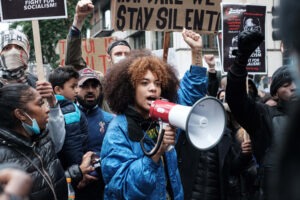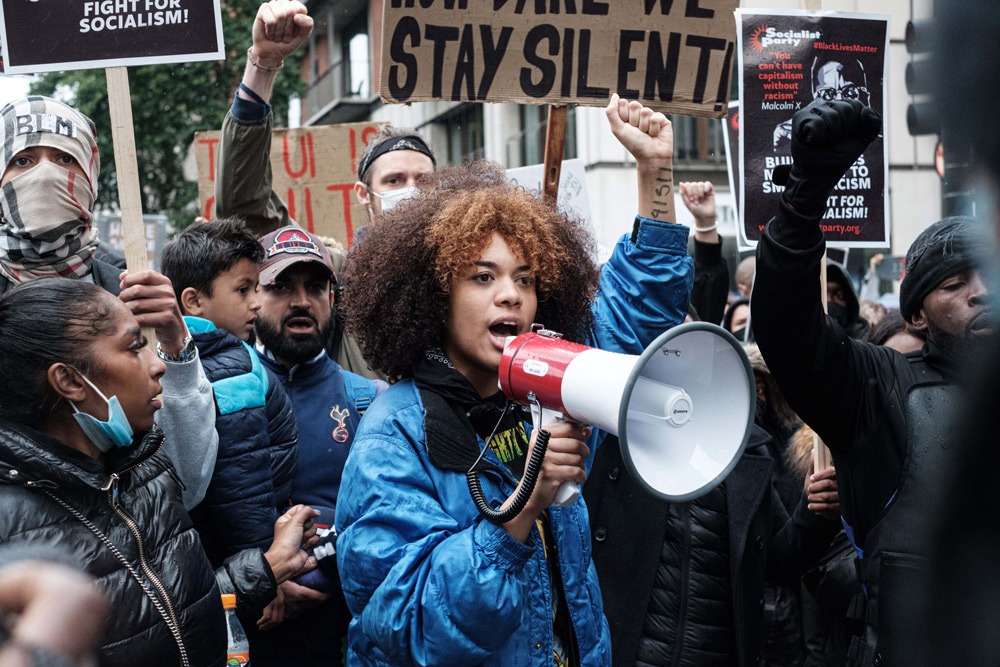
June 16, 2020; VICE
We are growing accustomed to the occasional fundraising campaign gone viral, starting with the ALS Ice Bucket Challenge campaign and growing to include more recent ones like those for RAICES and the Yellowhammer Fund. In those last two, the money came in as a symbol of concern from the public for the issue of child detention or abortion rights. The scope and scale of the organization was only an afterthought—part of a good news story. But when it comes to deploying the money, things get a little more complex, with some questioning choices made by the organizations involved.
Around two weeks ago, NPQ reported on the Minnesota Freedom Fund, which had been the beneficiary of a fundraising effort gone viral in response to arrests of protesters in Minneapolis in the wake of George Floyd’s murder. An improbable $31 million made its way into the coffers of the all-volunteer run bail fund—far more than they could spend on an immediate basis, even if all the arrested protesters had been given bail.
The organization started directing incoming donations elsewhere and had been building a plan for the money that would honor the intention of the gifts, but as they did, the organization was taken to task on social media for spending only $200,000 to date.
A “public request for transparency” started circulating on Twitter, asking for not only MFF, but also Black Visions Collective and Reclaim the Block—black led groups to which MFF had been directing donors—to account for the money donated. As VICE describes it, here is what happened next:
The implication in thousands of replies to an MFF tweet was that the organization had either misappropriated funds, or hasn’t been spending enough money to help people arrested in Minnesota during the protests. Questions from well-meaning people who don’t necessarily understand how the bail process works were then co-opted by right-wing Twitter accounts with huge followings to suggest that people had been scammed.
“There seems to be a disconnect with reality,” Pilar Weiss, director of the Community Justice Exchange, which is host of the National Bail Fund Network and is working with Minneapolis Freedom Fund, said in an interview. “An all-volunteer organization with a small budget received a huge amount of support they didn’t ask for, and that was a beautiful thing. A beautiful show of solidarity. And now they have to responsibly create systems to spend that money. But no one is going to spend $31 million in two weeks. That would never happen.”
In the frequently asked questions section of its website, the Minnesota Freedom Fund did explain what some of the uses for the money would be, saying that a normal day for the group would have entailed spending a maximum of $1,000, so it took a moment to figure out the right uses for the windfall, both short- and longer-term.
Thinking short-term, MFF tweeted, “Many people had no bail but were scooped up and charged, and now have ongoing legal costs. Part of fighting pre-trial injustice means making sure people aren’t pleading guilty on bullshit charges…‘support’ starts with legal representation, court fees, and transportation.” But the group’s mission in the long term is to eliminate the cash bail system, which disproportionately affects communities of color.
“This money now is going to the bigger cause of ending the cash bail system and hopefully getting out more people that are in this system unfairly,” says Mirella Ceja-Orozco, a board member with MFF and an immigration lawyer. “Our organization doesn’t want to exist long-term. We want to end the cash bail system. So, we would like to not exist forever because our goal is to not have a system that would require our existence.”
Additionally, much of the money is not yet under their control, as PayPal and Venmo, as Motherboard has previously reported, have stalled that end of the processing.
Finally, in an unhappier turn of events, according to the New York Times, the foundation is experiencing internal conflict. It’s in active arbitration with its only former staff person about her ethnic identity and confronting the predominantly white composition of its board, a fact noted by the organization’s critics.
Thus, a community in crisis around racial justice legitimately raising questions comes as no surprise, but the right-wing pile-on, predictable as it might be in these times, is an add on even as MFF says it’s spending the funds generously for the purposes intended.
Sign up for our free newsletters
Subscribe to NPQ's newsletters to have our top stories delivered directly to your inbox.
By signing up, you agree to our privacy policy and terms of use, and to receive messages from NPQ and our partners.
“People need to understand that this is a process controlled by police, prosecutors, and the jails. That is lost in some of the nuance,” says Weiss, adding it can take days or months for cases to work their way through the legal system. “People generously donated $31 million, and it will be used to free people as there’s bail to be paid. Let’s all take a breath.”
The group concedes, however, that their leadership issues have made their usual collaborators more cautious, and this may have slowed their work.
“Being at the reins of an organization getting this level of attention and resources is a different ballgame,” says Greg Lewin, who was board president until early June. “That includes public scrutiny. People should be mad, stay mad, stay impatient for change. I’m not sure we’re the perfect vehicle for that impatience but we get it.”
Lewin then brings up an old adage: “The left is exceedingly good at eating its own.”
“People think because we got money, we are now part of the system. It’s like, ‘No.’”
But the organization itself is not, nor should it be, exempt from accountability regarding its racial representation in leadership. Octavia Smith, the new board president, elaborated on the situation to Jonah Engel Bromwich in the Times.
The Minnesota Freedom Fund was founded in 2016 by Simon Cecil, then a master’s student at the University of Minnesota. Ms. Smith, a friend of Mr. Cecil’s, was the fund’s first employee, and became its board president in 2018. In 2019, Ms. Smith stepped away from her regular work with the fund but remained listed on its website as “emeritus board president.”
On May 31, though, she briefly cut ties with the organization altogether.
“I had some disagreements around leadership,” she said. “That is probably all I’m able to say.”
Ms. Smith, who is black, was asked to come back to the board “in order to steward a just transition of resources and power,” she said. On June 11, she was reinstated as the board’s president.
“Our board has historically been predominantly white, and we recognize that that’s a problem,” she said.
Still, Smith clearly has faith in the groups mission, purpose and role in this moment. “We’re scaling up to meet the needs of the community while also trying to scale our resources to meet the needs of those who are directly impacted by the harms of mass incarceration,” she says. “That requires deep care and intention. We’re moving. That is all I can say, that we’re moving.”
The group still has big plans to work with its national network to eliminate cash bail. As a final note, we should remember that the $220 million raised in the ice bucket challenge ended up funding breakthrough research on the disease, even as it significantly raised awareness. This windfall should also have similarly high expectations attached to it, even if the whole situation is about as random and yet as structurally predictable as might be imagined. We may even be able to learn from its struggles on leadership.—Ruth McCambridge













